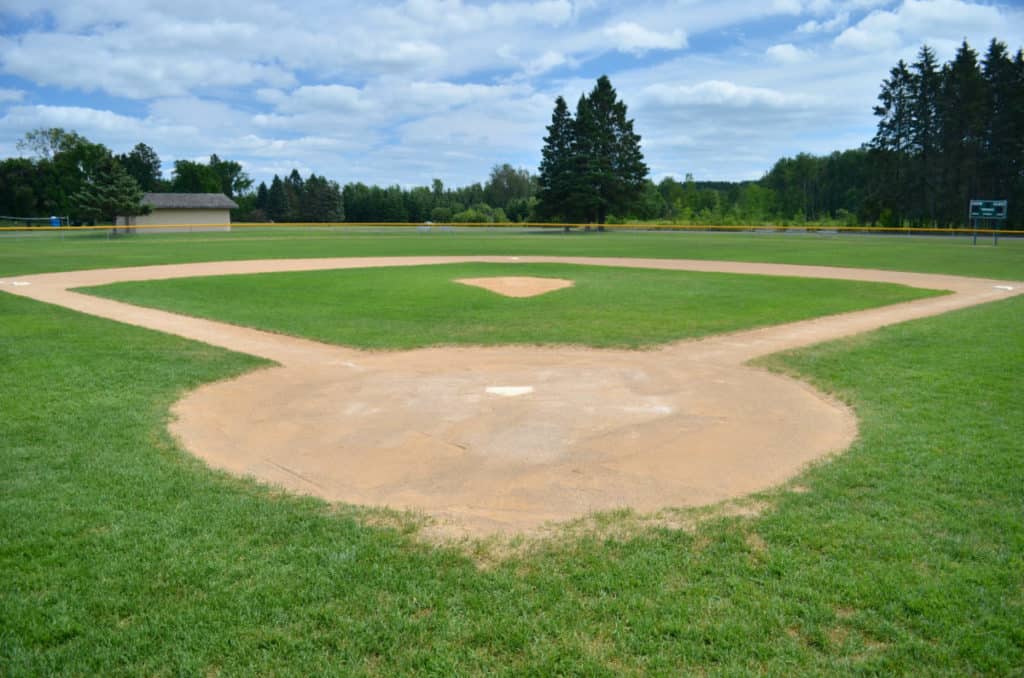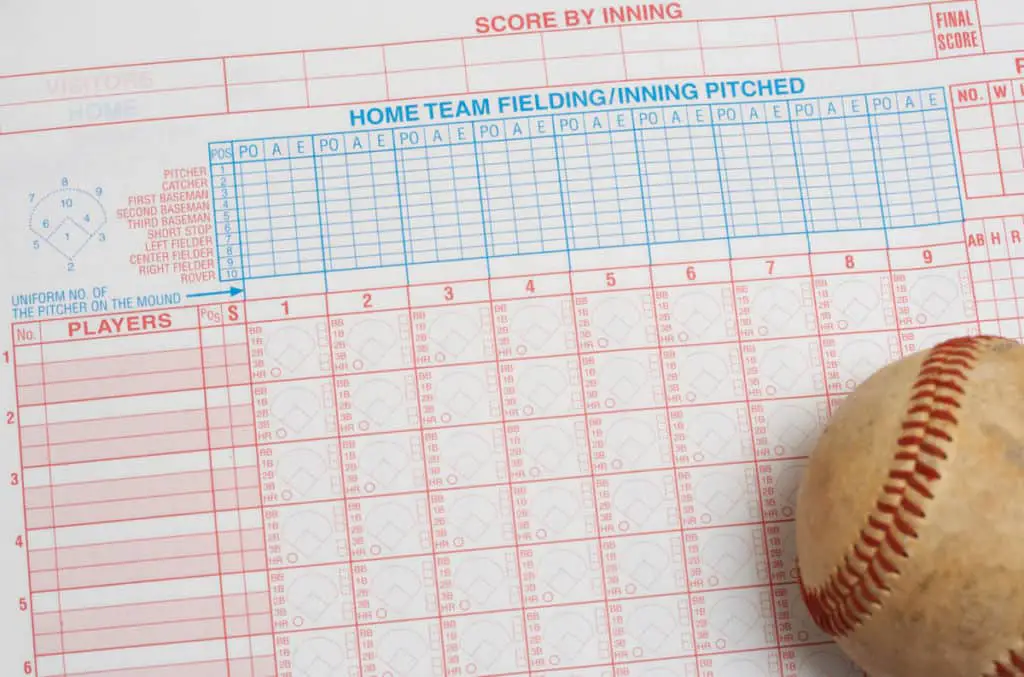Baseball is America’s pastime, people of all ages enjoy watching and attending baseball games.
Most fans, coaches, and players compete in a sport so that they can win, but can baseball actually end in a tie?
From youth sports to Major League Baseball, ties are rare, but possible. At each level, ties are handled slightly differently.
Can Baseball End in a Tie?
It depends on a few factors. Baseball typically does not end in a tie, but it can based on outside factors such as weather, number of pitchers, and level of play.
Baseball, as it was designed, does not end in a tie, however there are some factors that come into play. One of those factors is the level of play, youth baseball will have more tie opportunities than a Major League game.
Baseball has strict rules about handling games that end regulation in a tie. Extra innings at every level is a possibility.

Can Weather Cause a Game to End in a Tie?
Major League Baseball
At the MLB level, over the history of baseball, there aren’t that many ties recorded. The design of the game is to always determine a winner, through extra innings. These extra innings vary based on the level of play.
College Baseball
College baseball can also end in a tie because of weather. In college baseball, there is more of a chance to end games that are tied, because weather can delay flights for college kids to get back to school.
Time becomes more of a factor at this level, mostly because college students need to get back to school. There are curfew issues in some cases, and weather delay are become an issue for these student-athletes.
High School Baseball
There are more ties in high school baseball than there are in college baseball due to weather. There are a few factors that come into play here. High school games typically start in the late afternoon, and in the spring.
There is usually a very small window of time that these games need to finish, mostly because of darkness. Most high school fields do not have lights, which causes issues with weather delays. If there are weather delays, high school games have a difficult time getting back on track.
High school student-athletes also run into issues with school as well. These student-athletes need a decent amount of time in the evening for homework, and the later games go, the less of a chance these student-athletes have to get school work completed.
Youth Baseball
Weather becomes a huge factor in youth base3ball. Most youth fields are maintained by the cities that they are located in. With this being said, youth fields typically aren’t the best groomed fields available.
Weather becomes a huge factor for these games. If youth games do get weather delays, many times coaches and umpires come together to discuss how to proceed. Ties are accepted at this level more than other levels.
Youth Baseball Tournaments
There is a huge trend of youth baseball tournaments throughout the country. Some tournaments draw many teams, with limited time to fit all games in.
Many youth tournaments are seeded tournaments, where there are play-in games to determine rankings for a single elimination tournament to follow. There are usually time limits as well, to avoid getting backed up.
The time limits that are in place allow for ties during bracket play. These games need to stay on time because of limited field availability and tournaments that are many times maxed out on teams.
Ties are taken into consideration for seeding, and usually are not better than a win, but not worse than a loss. This does seem to make things fair and also keep tournaments on time.
What are Some Games that have Ended in a Tie?
Pirates vs Cubs (2016)
Weather is one reason that a MLB game can end in a tie. One of the more famous games recently that ended in a tie was in 2016, when the Pirates faced the Cubs. Weather delayed the game for a few hours, and the conclusion was to end the game as a tie.
The Pirates were out of the playoff hunt, but the Cubs had already secured a spot in the playoffs. This game ended after 5 ⅓ innings, the final score was 1-1.
Astros vs Reds (2005)
Weather played a factor in this game, as the game was in the seventh inning. Rules at this time forced teams to restart the game from the beginning. This game ended in a tie, and the teams records were not affected. Player stats were changed and affected, however.
In 2007, MLB changed the rules about tie games, saying that games would be continued the next time the two teams meet again, unless there are no scheduled games between the two teams. In this case, the game would end in a tie.
If there are playoff implications because of the outcome of the game, the game would be rescheduled and would continue from where it left off and ended.
Lack of Pitchers to End Games in a Tie
Games at the college, high school, and youth levels can sometimes end in a ties because of a lack of pitchers. Games that continue on because of extra innings, or even double headers can cause teams to run out of pitchers.
The lack of pitchers can cause games to end in a tie, mostly seen at the lower levels of baseball.
The youth level of baseball is most common for this because the arms of these young pitchers need to be protected. It is a smart move to end games that are taking too long and using too many pitchers.
How Do Extra Innings Work?
This can vary based on the levels of play, but the most common procedure is to keep playing until a team has outscored the opponent.
If a team scores a run in the top of the first extra inning, the home team then has a chance to match the run or outscore the opponent. If the home team matches the visiting team’s score from the top of the extra inning, then the game continues into a second extra inning.
New MLB Rule for 2021 for Extra Innings
A new rule for extra innings has been implemented in 2021 for the MLB. Extra innings start with a runner on 2nd base. The last batted out is the runner that will be put at 2nd base, then the game continues as normal until a winner is decided.
This rule has been created to limit the number of extra innings in a game. The rule is designed to force a winner quicker than normal extra innings. This rule has seen some improvements in the length of games.
The rule also creates some different strategies for coaches and teams. Teams have to decide if they will bunt the runner over, steal 3rd base, or just play normal baseball from that point.
What is the Longest Game in MLB History
The longest game ever recorded in MLB history was May 1, 1920. This game lasted 26 innings and was tied at 1-1. The game was played between the Boston Braves and the Brooklyn Robins.
The game never determined a winner and ended in a tie.

Final Thoughts
Depending on the level of play, games typically do not end in a tie in baseball. The higher the level of play, the less likely it is to see a tie occur.
Extra innings are played at most levels, varying in style. The MLB has adopted a rule in 2021 to account for extra innings, in an attempt to speed up the game and determine a winner. The MLB now places a runner at 2nd base to start extra innings.
Baseball is a game that is competitive in nature, and a winner typically is established. Athletes of all ages compete to win games, and extra innings can usually determine the winner.
In rare cases, weather can cause games to end in a tie, typically games that do not impact playoff rankings.
For most, determining a winner of a competition is too important, so extra innings in baseball seems to be an important part of the game.
